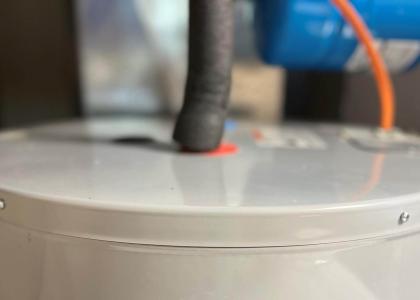Washington, DC—Texas policymakers could tackle spiking summer and winter power demands while reducing—not raising—overall costs to households and businesses, according to a new report. Incentivizing energy-saving upgrades in homes and commercial buildings and rewarding electric customers for voluntarily shifting some energy use to off-peak hours would reduce peak electrical demand and improve grid reliability at a far lower cost than building new, subsidized power plants, the American Council for an Energy-Efficient Economy (ACEEE) study finds. Individual households would see average monthly net savings of about $13 on their electric bills.
Texas has experienced a series of outages and close calls as peak load has grown by 9% over four years. Given continuing reliability concerns, state policymakers are considering various plans to expand power supplies by building new gas-fired power plants—estimated to cost Texans $10–18 billion, not including fuel and maintenance costs—that would be used only during times of high demand. Other proposals would reward existing and new power plants for providing power when needed, at costs from $500 million to $5 billion per year.
The ACEEE study shows that a far less costly option would more than pay for itself and reduce peak loads more quickly than power plants could be built, with notable impacts within just 18 months. ACEEE modeled the impacts of creating or expanding ten energy efficiency and demand response programs for homes and businesses (to be implemented by utilities). The study finds that implementing these programs from 2024 through 2030 could reduce summer peak loads statewide by about 14,800 MW and reduce winter peak loads by about 23,500 MW (far more than the 10,000 MW in increased supply from the proposed power plants). These are substantial savings: ERCOT projects that 2030 peak demand could reach 94,340 MW before subtracting the impacts of current utility efficiency and demand response programs.
In summer, programs rewarding charging electric vehicles at off-peak times would deliver the biggest impact, followed by automated cooling management to reduce peak-period cooling use. Incentivizing customers to improve attic insulation and seal air ducts would also have large impacts. In winter months, the biggest peak reductions would come from incentives for replacing electric furnaces with heat pumps, managing electric vehicle charging, and using smart thermostats in homes.
Implementing the recommended programs for heat pumps, smart thermostats, and electric vehicle demand response would save the most; together they could yield a 17,500 MW winter peak reduction at an average cost of about $101 million per year, or about $41 million per 1,000 MW of reduction. These programs plus demand response programs for central air conditioning can reduce summer peak by about 8,800 MW at an additional average annual cost of about $128 million per year. These are far lower costs than the costs of the proposed power plants.
Implementing the full set of programs recommended in the report would reduce energy waste and lower supply-side electricity costs the most. By 2030, electric customers would—on average—see their monthly electric bills fall by $20 in power system operational savings with an increase of only $7 in energy efficiency fees, for a net savings of $13 per monthly bill. These savings would accrue to all Texans, not just those who receive direct home efficiency improvements.
“It’s a win-win because it would cut dangerous spikes in energy demand and at the same time save money for families and businesses,” said Steven Nadel, ACEEE executive director and lead author of the report. “Building many more power plants to run when demand is highest is just a more expensive fix than is necessary here.”
The programs modeled in the report, while designed for peak demand reduction, could likely (together with current programs) also fulfill the mandate of legislation passed by the Texas Senate last week and now being considered in the Texas House. That legislation, Senate Bill 258, sets an annual energy-saving target for energy efficiency programs of 1% of electricity sales (to be achieved by 2030), a level of savings now being achieved in Arizona and Arkansas.
The ACEEE study, published as a summary report to be expanded later this year, builds on an earlier 2021 ACEEE paper that modeled a narrower set of programs. The new report factors in the help of new federal funding, uses updated data, and models new programs serving low-income households as well as two programs serving the commercial sector.

